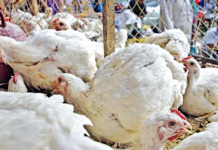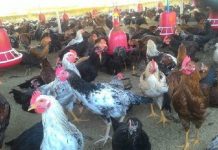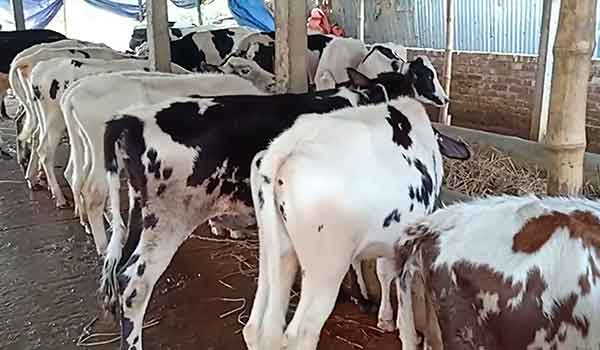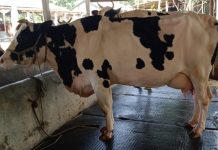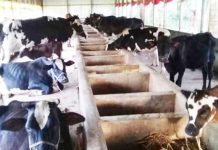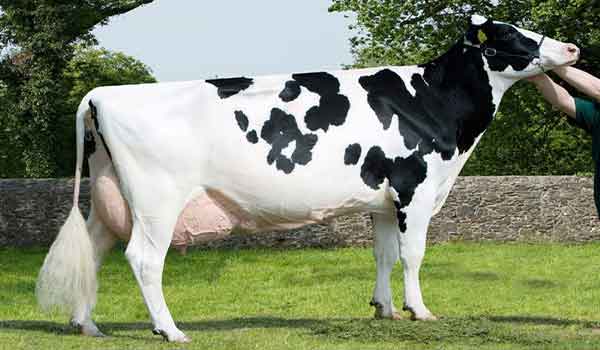by Monika Korzekwa, Product
Management, Dr Eckel GmbH,
Im Stiefelfeld 10, D-56651 Niederzissen, Germany.
ycotoxins have been strongly implicated as agents that cause acute and chronic diseases in humans and animals. Moreover, mycotoxins in feed account for huge economic losses by negatively affecting animal health and thus decreasing animal performance.
Although between 300 and 400 mycotoxins are known, those mycotoxins of most concern, based on their toxicity and occurrence, are aflatoxin, deoxynivalenol (DON or vomitoxin), zearalenone, fumonisin, T2 toxin, and T2 like toxins (trichothecenes).
The impact of mycotoxins
Mycotoxins produce a wide range of harmful effects in animals. The economic impact of reduced animal productivity, increased incidence of disease due to immunosuppression, damage to vital organs, and interference with reproductive capacity is many times greater than the impact caused by death due to mycotoxin poisoning.
In comparison to other animals, poultry species tend to be resistant to the effects of fumonisin, deoxynivalenol, and zearalenone. However, the presence of these mycotoxins within poultry rations is an indication that mould activity has occurred in the ration or in the ingredients within the ration.
Since mould activity can generate numerous other mycotoxins as well as reduce the nutritive value and palatability of feeds, the presence of fumonisin, deoxynivalenol, or zearalenone in poultry feeds is cause for concern.
Under practical conditions no poultry feed is completely free of mycotoxins. Furthermore, no feed can be expected to contain only one mycotoxin.
Multi-toxin occurrence may be one important explanation for divergences in effect-levels described in the scientific literature; where defined, purified mycotoxins are most often used in the majority of the studies.
In field outbreaks, naturally contaminated feeds may contain multiple mycotoxins and thus apparently lower contamination levels of a single specific mycotoxin can be associated with more severe effects.
The addition of mycotoxin binders to contaminated diets has been considered the most promising dietary approach to reduce effects of mycotoxins. The theory is that the binder decontaminates mycotoxins in the feed by binding them strongly enough to prevent toxic interactions with the animal’s metabolism and to prevent mycotoxin absorption across the digestive tract.
Under practical conditions the choice of the right mycotoxin binder is not easy to
make, and therefore it is important to compare the efficacy of different binders not only in vitro, but in vivo.
To evaluate the effect of different mycotoxin binders on several parameters day-old broiler chicks (as-hatched, Cobb 500) were allocated into four groups, receiving four different diets over a period of 36 days.
In addition to a control group (without mycotoxin binder), three different mycotoxin binders with the same dosage were tested:
l Product 1: AntaFerm MT80.
l Product 2: Commercial mycotoxin binder based on yeast cell walls.
l Product 3: Commercial mycotoxin binder based on mineral clay.
Feed was naturally contaminated with various mycotoxins (Table 1).
Broilers fed Anta Ferm MT80 were shown to have the highest final live weight compared to control (-4.4%), product 2 (-3%) and product 3 (-1.6%).
Furthermore daily weight gain was highest for AntaFerm MT80-treated broilers and lowest in the control group. Feed conversion ratio was improved compared to other treatment groups and control group.
Nutrient interactions
The interaction of various mycotoxins, but especially aflatoxin, with various nutrients has been the topic of numerous experiments. Despite a long-standing recognition of this relationship, the interaction of mycotoxins with nutrients is complex and still not fully understood.
Nevertheless, it is known that impaired absorption, distribution, and utilisation of nutrients of practically all nutrient classes are common during mycotoxicoses.
For example, Osborne and Hamilton (1981) demonstrated that aflatoxicosis results in low activities of pancreatic trypsin, lipase and amylase in broiler chicks. These low activities were apparently due to failure of enzyme synthesis rather than specific enzyme inhibition.
In a review of Schaeffer and Hamilton (1991), interactions between fat soluble vitamins, water soluble vitamins, protein, fat, fibre and a wide range of mycotoxins in different animal species were discussed.
To quantify the effect of different mycotoxin binders on nutrient digestibility, digestibility of protein and fat as well as nitrogen, phosphorous and calcium utilisation were measured.
Feeding AntaFerm MT80 led to higher digestibility and utilisation of all analysed nutrients (Fig. 1). This indicates a lower interaction between mycotoxins and nutrients due to a higher binding capacity and therefore a lower impact of mycotoxins on animal health and digestion.
Fat digestibility was deteriorated in broilers receiving the product based on yeast cell walls compared to the control group and both treatment groups. Improved nutrient digestibility of AntaFerm MT80 here is in line with improved zootechnical performance.
In addition to the fact that mycotoxins interact with nutrients, mycotoxin binders are assumed to possibly reduce animal performance due to nutrient binding. This is a valid concern because unselective binders might bind not only a broad range of mycotoxins but also a wide variety of nutrients.
In this study digestibility and utilisation of AntaFerm MT80 treated animals were higher compared to animals in the control group, indicating that there was no nutrient binding due to the used mycotoxin binder.
Conclusion
Sometimes mycotoxins occur at concentrations high enough to cause major losses in health and performance of animals. However, mycotoxins are more usually at lower levels that result in interactions with other stressors to cause subclinical losses in performance, increases in incidence of disease and reduced reproductive performance.
To the animal producer, these subclinical losses are of greater economic importance than losses from acute effects.
The specific composition of Anta Ferm MT80 was shown to be most effective compared to two other commercial mycotoxin binders, in improving animal performance and nutrient digestibility when feed is naturally contaminated with different mycotoxins.
ফার্মসঅ্যান্ডফার্মার২৪ডটকম/এম




